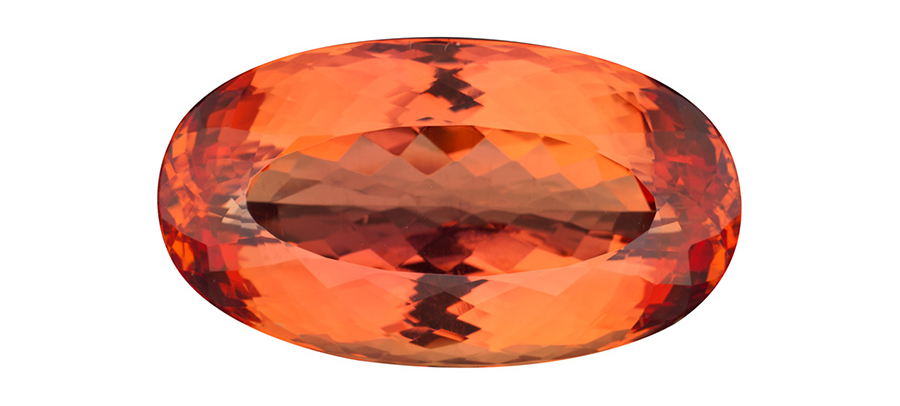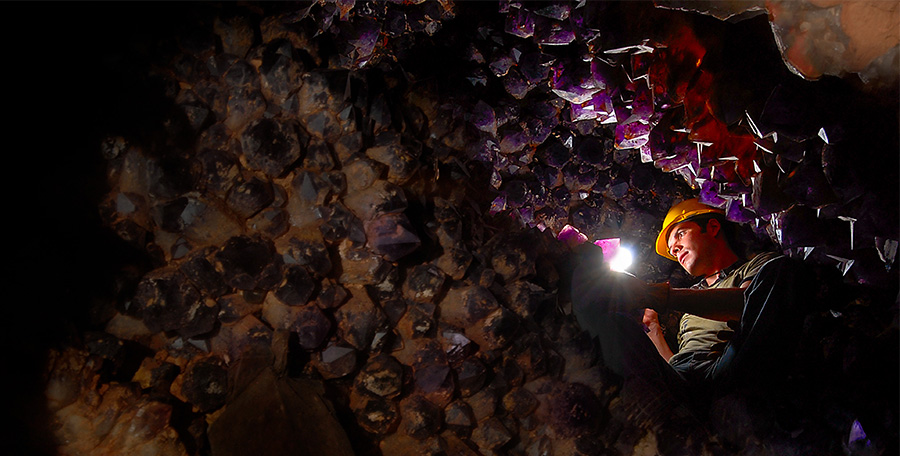November Birthstone
Topaz & Citrine
The birthstones for November are topaz and citrine. Both are fairly plentiful and reasonably priced. These two birthstones for November are popular all around the world for their relaxing vibes. To choose the ideal birthstone for you or a loved one, learn more about these stones.

Topaz and citrine are two lovely birthstones that can be worn by people born in November. While topaz is available in a wide range of colours, citrine is renowned for its lovely yellow and orange tones. Both birthstones for November are thought to provide relaxing qualities that also bring luck and warmth to the bearer. Since high-quality gems like topaz and citrine are not as scarce as for many of their contemporaries, these birthstones are often priced reasonably. As a result, people who were born in November have a wide range of alternatives. Choosing one will be your biggest issue.
Topaz Birthstone Meaning & History
Colourless, light blue, yellow, orange, pink, violet, brown, and, very infrequently, red are just a few of the topaz hues. The majority of blue topaz seen today is a permanent byproduct of heating and irradiating colourless topaz. The colourless topaz used in “Mystic Topaz” has a thin synthetic layer applied to it to provide the rainbow illusion.
Some people think the Sanskrit word tapas, which meaning “fire,” is where the word “topaz” originates. Some attribute it to the Greek topazos. It has long been believed that the birthstone for November has several advantages. Topaz was regarded by the ancient Greeks as a source of power. Between the years 1300 and 1600, Europeans believed it could foil magic spells and calm a raging temper.
Many Indians have long held the belief that wearing topaz above the heart ensures long life, beauty, and wisdom. Imperial topaz, which is clearly pinkish orange, is considered aristocratic. The name of this gem, which was mined in Russia’s Ural Mountains, is generally said to have sprung from the Russian royal family’s emphasis on retaining the finest colours solely for their use. The village of Ouro Preto, which is closest to Brazil’s most productive topaz mines, was visited by Brazilian Emperor Pedro II in 1881, and he was given a reddish topaz as a present. This is an alternative explanation that is particularly well-liked in Brazil.
The gem for the fourth wedding anniversary is blue topaz, while the gem for the 23rd wedding anniversary is imperial topaz.

Topaz Source
Since topaz has been mined in Minas Gerais for more than 200 years, it is one of the most significant suppliers of high-quality topaz. Some of the colours discovered here are yellow to orange, red, pink, violet, and mixtures of red with orange or purple. Ouro Preto, a neighbouring town, makes a good companion. In this UNESCO World Heritage Site, grand colonial churches dot the skyline and the city is crisscrossed by charming cobblestone lanes.
Pink topaz is renowned for being produced in Northwestern Pakistan. Since 1972, mining has been taking place near the tiny village of Katlang on Ghundao Hill. The most sought-after pink topaz from Katlang contains a hint of violet and is sometimes referred to as “cyclamen pink” by those in the jewellery industry.But this lovely pink birthstone for November is only infrequently discovered, especially at Ghundao Hill.

Along with the ancient Russian locales, other important suppliers of this gemstone for November today include Namibia, Nigeria, Madagascar, Mexico, Myanmar, Sri Lanka, and the United States.
Topaz Care & Cleaning
Although topaz rates an 8 on the Mohs scale for hardness, it is not particularly robust, thus caution is needed to prevent chipping or fracture. Avoid using steam or ultrasonic cleaners to clean this November birthstone. It works best in warm, soapy water. Internal cracks in topaz can be brought on by intense heat or abrupt temperature changes. The colour of the birthstone is often resistant to light, but some yellow to brown gems may fade over time if exposed to heat or sunshine. Some chemicals could have a small impact on topaz.
Mystic Topaz’s coating can resist typical wear, however it can be removed with abrasive cleaners or polishing wheels. The only cleaning solution suitable for a topaz birthstone treated in this way is a mild soap solution.

Citrine Birthstone Meaning & History
The clear yellow to brownish orange form of quartz, which has been used in jewellery for thousands of years, is the birthstone for November. Since ancient times, citrine has been a popular gemstone, and it has occasionally been confused with topaz, the other birthstone for November. People thus believed that citrine possessed the same abilities as topaz. The citrine gemstone was thought to calm the person and settle their anger.
The jewellery made of rock crystal by the ancient Greeks glistened like permafrost. Massive purple amethysts were put in the rings worn by Roman pontiffs, while citrine has also been found in ancient Roman jewellery. In vibrant Scottish jewellery from the Victorian era, it was especially common. Citrine is a gemstone used for the nose and is thought to come from the French word for “lemon” (citron), is given for the 13th wedding anniversary.
The majority of citrine on the market today is created by heating amethyst. One of the most economical and popular yellow gemstones is citrine, which is readily available in a wide range of sizes.

Citrine Source
Top suppliers of this birthstone for November are Bolivia, Spain, Madagascar, Mexico, and Uruguay. Brazilian mines produce the majority of the amethyst that is normally heat treated to a citrine colour.
Bolivia’s Anah mine, a significant source of natural, unheated citrine, is located deep within the largest freshwater marsh in the world. Wildflower fields, colourful birds, rainbow-colored butterflies, Howler monkeys, and jaguars are just a few of the characters on this enormous stage. The setting is appropriate for the mine’s story. It was presented to a Spanish conquistador as dowry when he wed Anah, a princess from the Paraguayan Ayoreos tribe, in the 1600s. Before it was unearthed in the 1960s, the mine had been lost for three centuries.

The Anah mine creates a special crystal that contains both amethyst and citrine; this combination of colours is known as ametrine when it appears in a fashioned gem. The Anah mine produces citrine birthstones that normally range in colour from orange-yellow to brownish/greenish yellow.

Citrine Care & Cleaning
Your citrine birthstone, which rates a 7 on the Mohs scale of hardness and has good toughness, is often resilient enough for everyday use and maintenance. Warm, soapy water can be used to clean it without risk. While using an ultrasonic cleaner to clean your November birthstone is typically safe, steam cleaning poses a risk because the extreme heat could result in the stone cracking.

